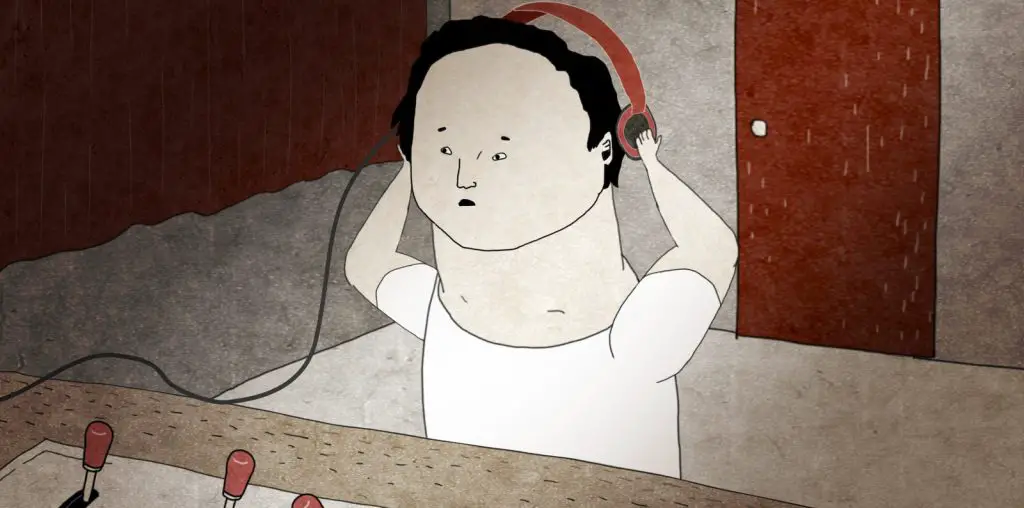
Because the animated world is one in which anything at all from cars that talk to rats that cook may be conjured at will, the ticketbuyer seldom walks away from a big screen cartoon with the sense of just having just seen something he or she has never seen before. That is likely to prove precisely the reaction of nearly anyone who encounters “Persepolis,” however. The combination of pen, ink and geopolitical strife have yet to yield anything quite like it.
More than just another story of a bright, rebellious young girl coming of age, the movie offers the story of a bright, rebellious girl coming of age in the midst of Iran’s Islamic revolution. Telling that eye opening tale is the woman she grew up to be–Marjane Satrapi, the author and illustrator of several internationally admired autobiographical graphic novels. Together with Parisian animator Vincent Paronnaud, Satrapi has adapted her books into a work of cinema that’s every bit as singular as the personal journey it depicts.
For audience members whose knowledge of modern Middle Eastern history could stand some brushing up, the first act’s portrait of Satrapi’s early family life will contain a number of revelations. Raised by parents who were leftist intellectuals and a fiercely feminist grandmother, her passions were surprisingly similar to those of most western kids her age. She prized her Adidas, flirted with boys, taunted her teachers and blasted rock music in her bedroom. The secret poilce were easy enough for most people to sidestep and, when the shah was overthrown and exiled in the late 70s, there was widespread optimism within the country that his departure would pave the way for a freer and more democratic society.
To the contrary, a theological police state filled the vacuum and government rule grew even more repressive. Despite the fact that family friends were persecuted and a beloved uncle was jailed and killed, the teenage Marjane retained her defiant spirit. Eventually her mother and father feared that very feistiness would make her a target for fundamentalist thugs and packed her off to Vienna.
Satrapi’s first European experience (she lives in Paris today) was a mixed blessing at best and leads the movie down progressively darker narrative corridors. On one hand, she was safe from the horrors of the war which soon broke out between Iran and Iraq. On the other, she felt out of place among the students at her school, rich kids who posed as punks and nihilists. She fouind love and lost it again and again. At one point, she drifted away from that society, was kicked out of a succession of living situations due to her increasinly erratic behavior and found herself barely surviving on the street. I haven’t come across another reviewer who picked up on it, so I might be mistaken, but the movie seems to hint that she was the victim of sexual violence during this period. Homesick, Satrapi returned to Iran a psychological wreck only to find that the place she missed no longer existed.
Clearly, we are far from Pixar country here. While “Persepolis” is in the end a celebration of family bonds and individual resilience, the film has little in common with the candy colored feel-good fare that’s come to dominate animation. Its palette rarely ventures beyond black and white and its 2-D look is rooted in German expressionism. Nonetheless, the movie’s visual style is nothing short of exquisite.
Its tone spans the gamut from exultant to despairing, the content decidedly adult in places for a picture that looks like something Charles Schulz might’ve drawn on acid and the jabs Satrapi takes at American policy are gentle all things considered. As a child, she listened as her grandmother wished aloud the shah would “join his pals in Washington” and as a family friend who’d been tortured related that his jailers had been trained by the CIA. As a young woman she returned to Tehran before leaving Iran once and for all and was staggered by the toll the war had taken on her homeland. She blamed Saddam for starting it, of course, but the United States as well, for selling weapons to both sides.
“Persepolis” covers a lot of ground. One of its many themes is the challenge of loving one’s country in spite of itself. Having been reminded in the course of its 95 minutes just how complicit ours was in so much of the suffering that befell Satrapi’s, this is a challenge with which American viewers should be all too able to relate.

